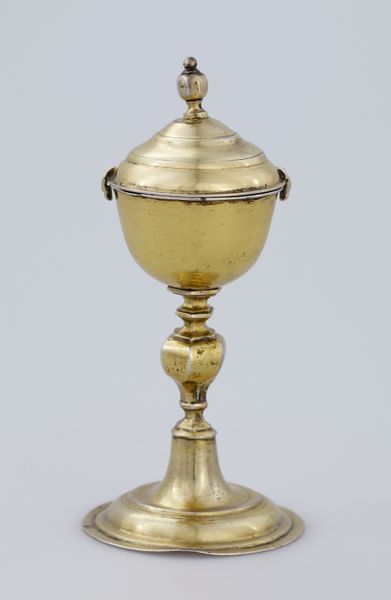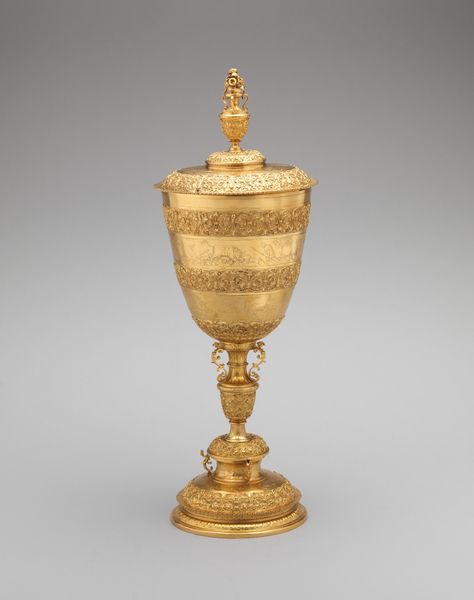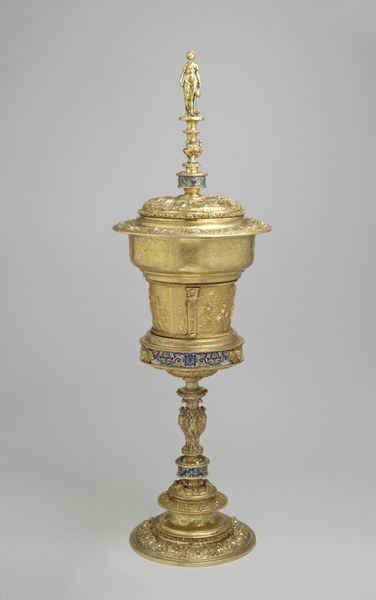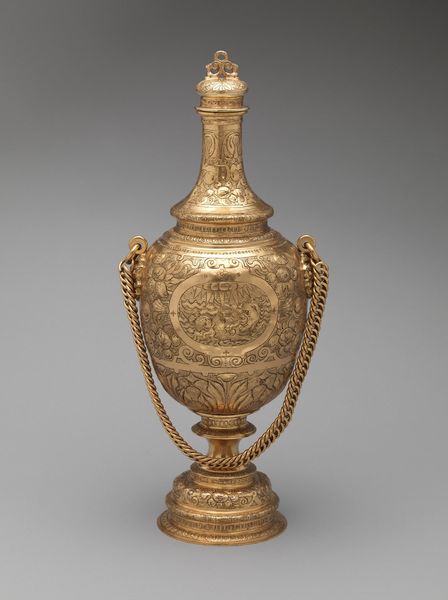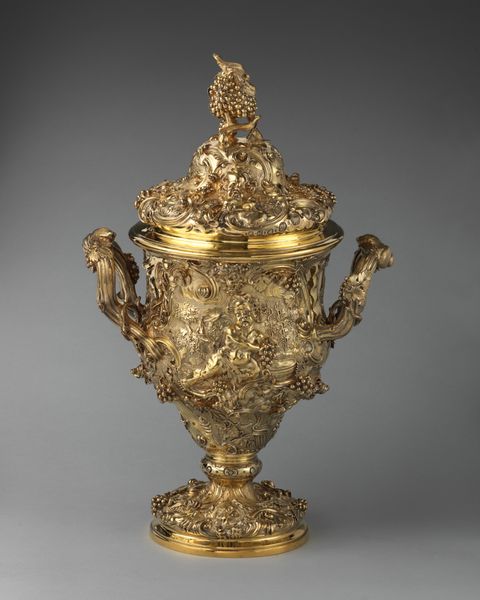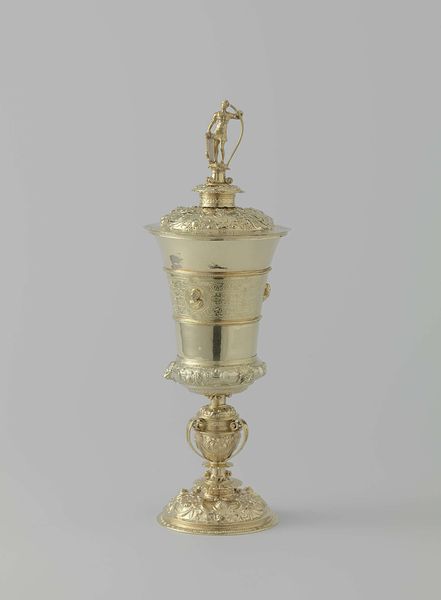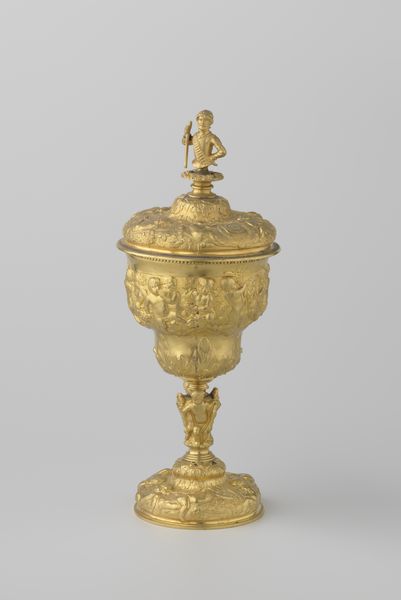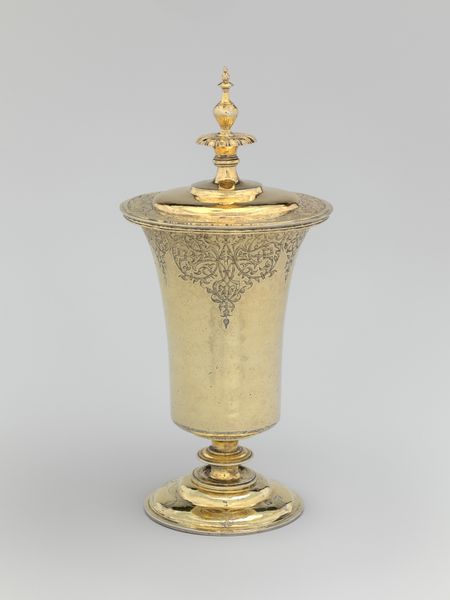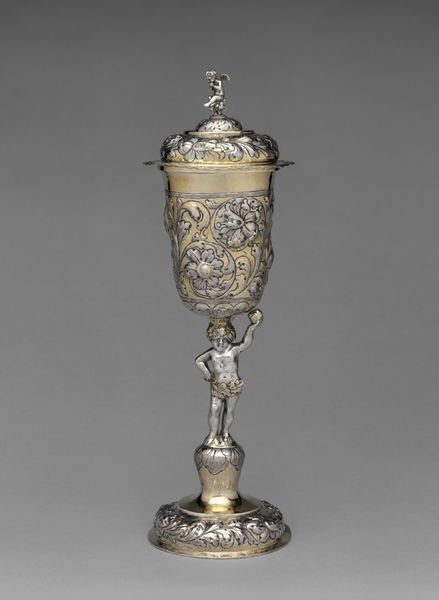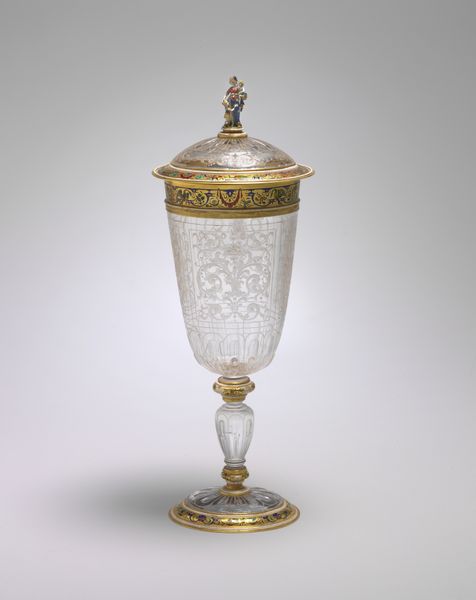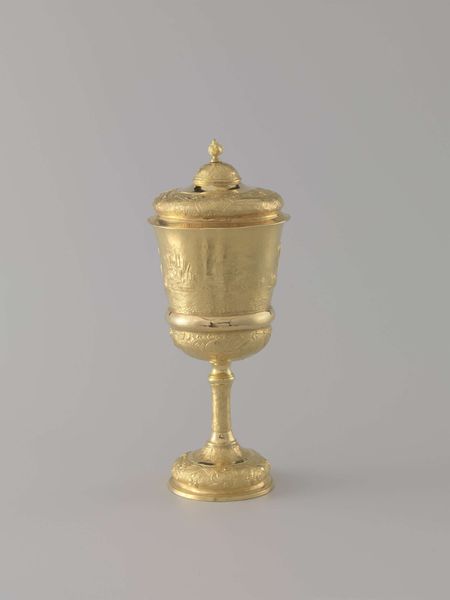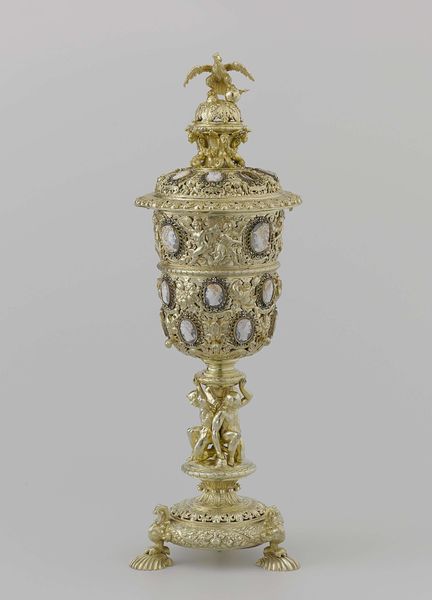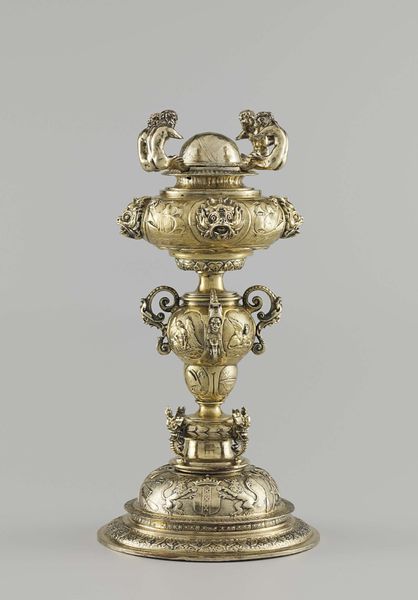
ornament, carving, silver, metal, sculpture
#
ornament
#
carving
#
silver
#
metal
#
11_renaissance
#
sculpture
#
history-painting
Dimensions: Cup: 21.3 × 13.5 cm (8 3/8 × 5 5/16 in.) Lid: 11.4 × 14.1 cm × (4 1/2 × 5 9/16 in.) Overall: 32.1 × 14.1 cm (12 5/8 × 5 9/16 in.)
Copyright: Public Domain
Curator: Allow me to introduce John Spilman’s "Ostrich Cup," crafted in 1590. A rather magnificent object residing here at the Art Institute of Chicago. Editor: Immediately, I am struck by its opulence. The contrast between the smooth, pale ostrich egg and the heavily ornamented, gilded silver is quite arresting. It radiates privilege, doesn’t it? Curator: Indeed. Note how the spherical form of the egg is echoed and amplified in the cup's overall design. The verticality provided by the stem creates a pleasing tension against the roundness. Editor: And look at the labor involved! The intricate chasing on the silver – those floral motifs, the miniature figures holding the bowl aloft – it speaks to a considerable investment of time and specialized skill. Who were these artisans? What were their lives like as they fashioned such luxury items? Curator: The figures themselves seem deliberately placed to frame the ovoid egg, subtly enhancing its perceived volume and perhaps hinting at hidden narratives within. Editor: This blending of naturalia and artificalia raises questions about material value and cultural status. The Ostrich egg itself, a rare and exotic object, instantly elevates this piece. And the gilding, of course, further proclaims wealth and power through its lustrous sheen. The gilding suggests it wasn't just about functionality; it was a display of something else. Curator: Precisely! The object transcends mere utility; its symbolism is interwoven with artistry. It exists within an allegorical framework. The Ostrich shell might symbolize endurance; or, perhaps even fertility. Editor: The symbolism makes me wonder about the societal structures that fostered its creation, those structures also determine its use. This was probably something flaunted during gatherings and feasts. What were those gatherings like? Were there commoners involved at all? How did something this lavish contribute to shaping relations and distributing resources in the broader economy? Curator: These pieces serve to remind us of their time, the social dynamics, and the evolution of craft into high art. Its place here in the museum provides for just that interpretation! Editor: And from a material perspective, it invites reflection on the often-unacknowledged hands that shaped our world, transforming humble raw materials into breathtaking spectacles of artistic and cultural significance. Curator: Well said. Thank you for this exchange of our perceptions and ideas around it, I agree this conversation opens new ways to reflect on this remarkable "Ostrich Cup.”
Comments
No comments
Be the first to comment and join the conversation on the ultimate creative platform.
